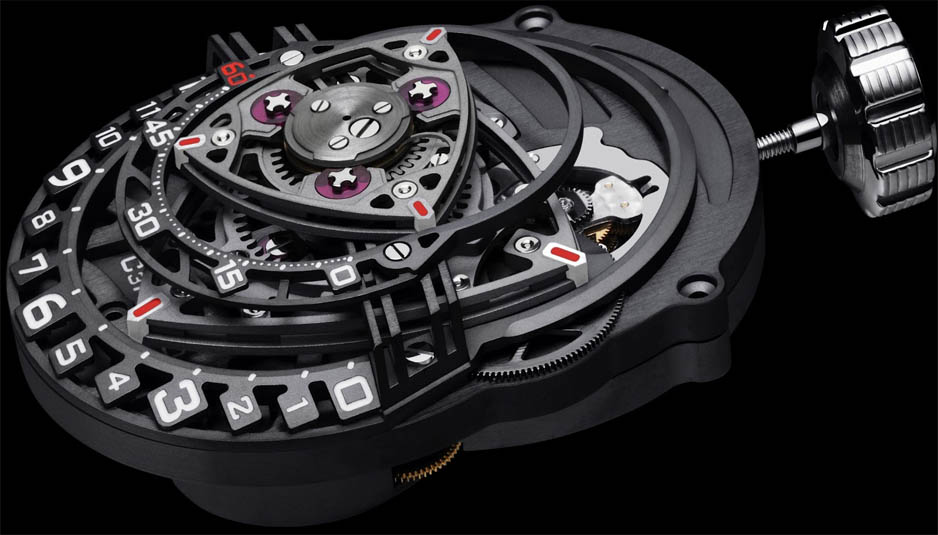The Wankel engine, between genius and production difficulties
The Wankel engine is born from the genius mind of Felix Wankel, who still seventeen, in 1919, he had a prophetic dream in which he saw a car built by him with a particular engine, where there were only rotating parts.

wordpress.com
The Wankel engine is born from the genius mind of Felix Wankel, who still seventeen, in 1919, he had a prophetic dream in which he saw a car built by him with a particular engine, where there were only rotating parts. Over the years he had planned that engine which bears his name, arriving at the bases of the Wankel in 1924. He resumed his work after the war, together with the NSU which gave him the funding to develop a prototype of the engine.
It is the only internal combustion engine went into production different from the piston engine with reciprocating movement, characterized by only rotating elements. There isn’t the transformation of the motion from the longitudinal to the alternative, the dissipations of energy are minimal, you get a greater development of power and is characterized by a reworking of the classic phases of suction, expansion, compression, combustion and exhaust.
After the prototype that arrived in 1957, in 1959 the NSU introduced the first car with a Wankel engine (the Spider Wankel) equipped with a single rotor engine.
Spider WankelIn 1961 there was official involvement by Mazda, which later acquired the exclusive license for the development of the Wankel engine. In 1967, the NSU produces the Ro 80,(characterized by low reliability due to the short life of the sealing elements) the most popular car with rotary engine of NSU; in Japan in 1967 debuted the 110 Cosmo that was the first car of Mazda with rotary engine.
Then the NSU abandoned the car market for the high cost of maintenance of his car (its seals had to be replaced at around 10-15 thousand km) and the Mazda was the sole developer of the Wankel engine, (reaching steel alloys that allowed a maintenance interval of about 80,000 km) which remained in production until the last few years with the Mazda RX8 equipped by two-rotors aspirated rotary engine of last generation.
MAZDA 110 COSMO, BRINGATRAILER.COM
The characteristic elements of a Wankel engine are essentially:
• The rotor with a triangular shape with convex sides;
• The combustion chamber shape trochoidal;
• The eccentric shaft;
• The plates that separate the various rooms;
• The gears on which the rotor rotates.
The operating cycle comprises the following phases:
- When the edge of the rotor passes the intake port, the space between the side of the rotor and the wall of the stator begins to grow, thanks to the rotation and translation motion described by the rotor. This creates a vacuum that draws the air – fuel mixture inside the engine. The mixture is then aspired through the inlet port.
- Continuing its stroke, the rotor closes the inlet port; also describes a trajectory such that the volume available to the air-fuel mixture is reduced more and more, compressing the mixture. After reaching the optimum compression pressure, it ignites.
• As soon as the two sealing elements of the rotor are among the candles, sparks and so began the combustion-expansion phase. For a more satisfactory combustion all the modern rotary engines are equipped with two spark plugs instead of one. Due to the lenticular shape of the combustion chamber, formed in the rotor, the single candle didn’t provide a uniform and complete combustion.
• Following the thrust due to the expansion of the gases, the rotor is forced to continue the rotation; when the sealing element in front of the concerned room uncovers the exhaust windows, the gases are expelled. This cycle of operation is in sequence accomplished in each room.
Fase di aspirazione, APPUNTIDIGITALI.IT Fase di compressione, CLOSEUPENGINEERIN Fase di combustione, APPUNTIDIGITALI.IT Fase di scarico, ITALIAMAC.IT
For each revolution of the shaft there is at least one burst phase by one of the faces of the rotor; while for a cycle 8 engine, each piston needs 2 rounds to perform a burst.For this reason, from the point of view of the competitions and the administrative point of view is assigned a double displacement to the Wankel engines among actual.
The advantages of this type of motor can be summarized as:
• The small number of moving parts;
• Low noises and low vibrations;
• Weight decreased following the reduced dimensions of the engine and high power/weight ratio;
• For lower temperatures reached you get a lower emission of nitrogen oxides;
• More power, for the same displacement, among piston engine;
Let’s examine the other elements that make up this engine:
MOTORI.IT.MSN.COMwe see the shaft of a two-rotor engine, with two eccentrics placed at 180 ° relative to one another, allowing the two rotors to work in opposite phases. Along the shaft there are various oil passages that allow the lubrication of the whole system.
On the other side of the rotor there is the gear that goes to interact on gear stator, which is fixed in integral manner with the back plate and can’t rotate, on which rotates the rotor internal gear that has triple number teeth. It’s for this reason that, for a complete revolution of the rotor, it needs 3 rounds of shaft. The intake and exhaust windows are formed in the stator casing where are also accommodation the candles.
Then we have the sealing elements that in the Wankel engines are represented by the apex seals, the seals of the apex, as they are placed on the apex of the rotor, on the tip.
In the piston engine the piston rings are lubricated at the time of top dead center and bottom, where the oil is collected in the cylinder, and then the wrapper is optimally lubricated . In the rotary engine this isn’t done, because there is never, basically, a moment of “rest” for the wrapper and so they need great lubrication and especially materials that can withstand the constant friction and to step on the exhaust ports.
The wrapper, during the rotary movement, goes to pass over the edges of the exhaust port.
Now it’s legitimate to ask the question: why the Wankel engine has not been so successful?
This is due to the fact that the realization of the main elements of such an engine, i.e. the rotor and stator, presents numerous difficulties requiring the use of specific machinery and great precision. Furthermore, to ensure the materials necessary wear resistance are critical subsequent treatments.
Other constructive problems also relate to the combustion chamber, ignition, lubrication and cooling of the rotor.
The particular configuration of the rotor makes that, the combustion chambers, are developed mainly in length, resulting in a configuration certainly not optimal; especially for the considerable distance that is created between the spark plug electrodes and the extremes of the combustion chamber (Mazda for this reason has developed the technology “Twin spark”, i.e. the double candle for each rotor).
A further problem with the vacuum system is the lack of torque at low speeds or even the problem of rejection of the mixture.
All this combined with the lack of durability of the sealing elements and the high rate of unburned hydrocarbons, as well as high fuel consumption (compared to reciprocating engine) has decreed the end of this engine.
But who knows, maybe in the future with the advancement of technology we can cut out a worthy place for this brilliant invention.
